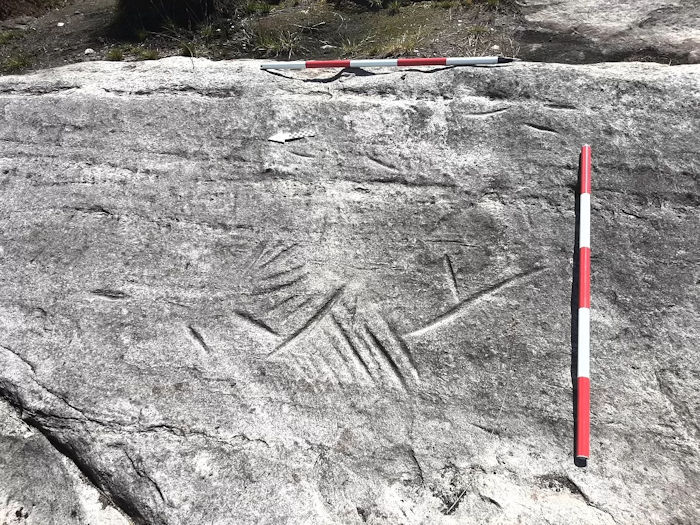Neolithic axe grinding site uncovered
About 4,500 years ago, Neolithic toolmakers used this site like a giant whetstone to polish axes. The large sandstone was discovered by archaeologists and volunteers who examined an area close to Balfron, near Stirling, Scotland.

There are many magnificent ancient monuments and sites in Scotland. “The merging of the Neolithic Age into the Bronze Age also sawthe flowering of an extraordinary architectural phenomenon – the erection of stone circles and standing stones.” 1 The sacred Callanish stone complex on the Isle of Lewis and the intriguing Neolithic Skara Brae village are just a few examples one can mention.
“Over 5000 years of human history can be traced across the Kilmartin valley. Kilmartin Glen is considered to have one of the most important concentrations of Neolithic and Bronze Age remains in Scotland.
There are at least 350 ancient monuments, of which 150 are prehistoric. Of particular interest are chambered cairns, round cairns, cists, standing stones and rock carvings.
These Neolithic and Bronze Age monuments, together with the stone circle at Temple Wood and the standing stones at Ballymeanoch are all part of the ritual landscape of Kilmartin Glen.” 2
“The Neolithic period (or New Stone Age) began approximately 6,100 years ago and ended around 4,500 years ago (4,100 BC to 2,500 BC), which begins with the earliest evidence of a farming way of life and ends when copper tools are first used.
During this time, farmers arrived from what is now mainland Europe – and since people were now staying in one place for longer periods of time (rather than having to roam around for food), they also started building permanent structures such as stone dwellings and tombs.
This means that there are a lot more clues for archaeologists compared to the Palaeolithic and Mesolithic periods.” 3
Archaeologists have previously found many polished stone tools (axeheads), but now scientists get a better understanding of how these Neolithic tools were kept in working condition.

The recently unearthed axe grinding site represents Scotland’s largest concentration of Neolithic axe grind points and one of only two known Scottish polissoir sites.
“Experts believe people may have traveled for miles to smooth or sharpen axes at the sites.
Scotland’s Rock Art Project volunteer Nick Parish and Stirling Council archaeologist Dr Murray Cook were among those who stripped turf from the sandstone and recorded the polissoirs at Balfron,” BBC reports.
The finds have been listed among archaeological highlights from this year by the Dig It! project, external.